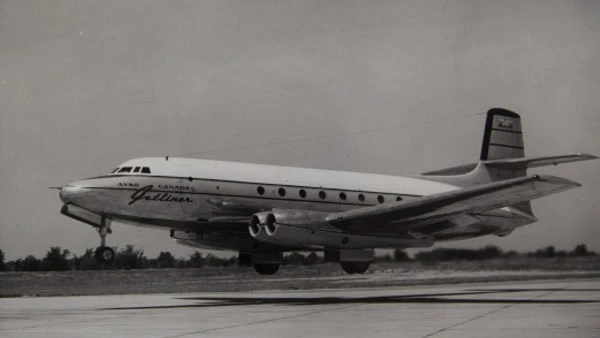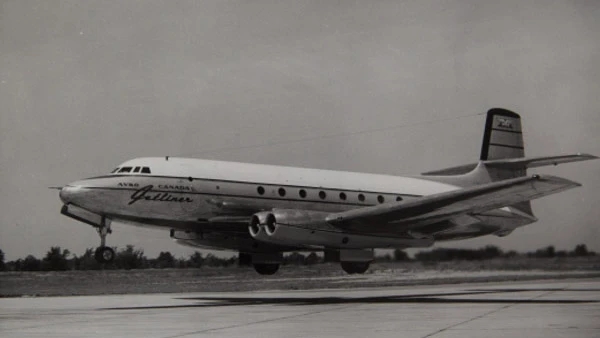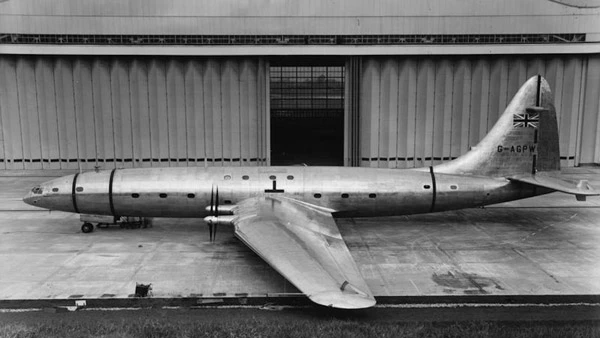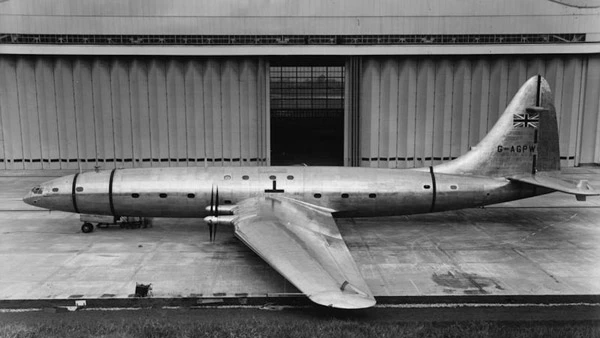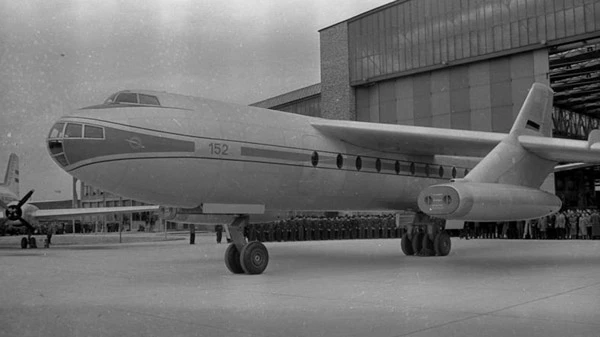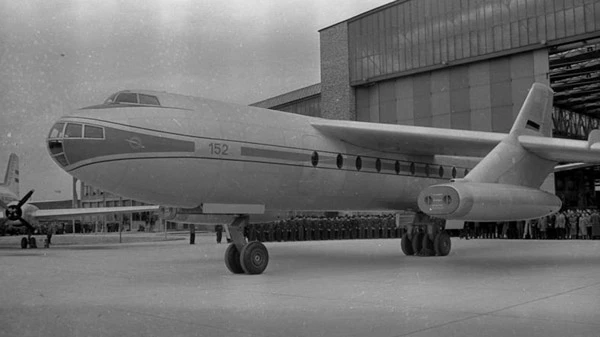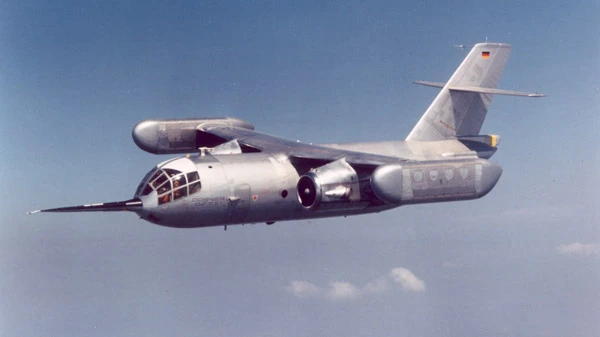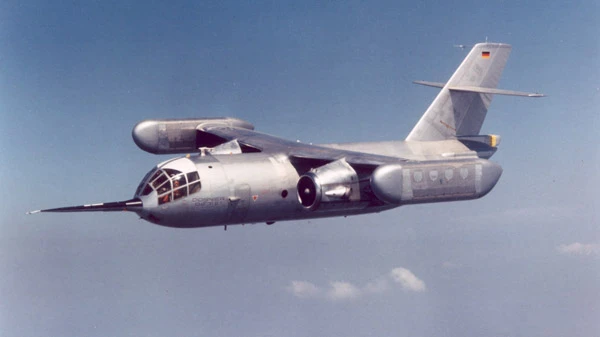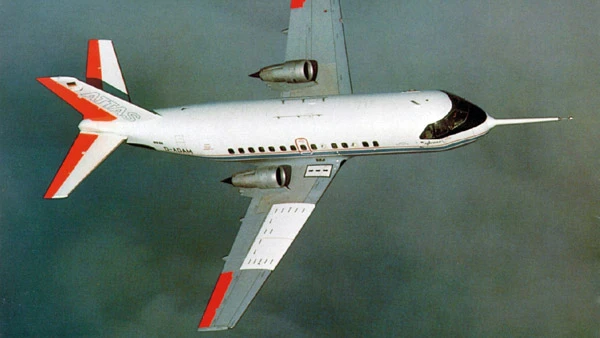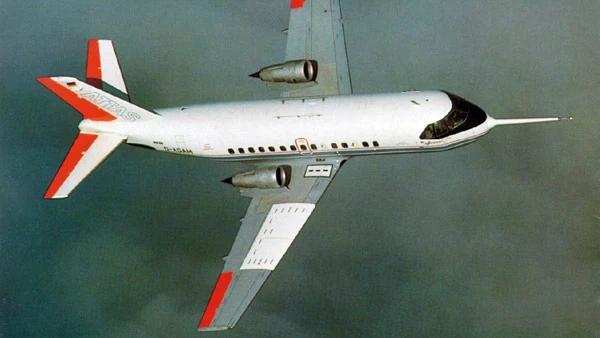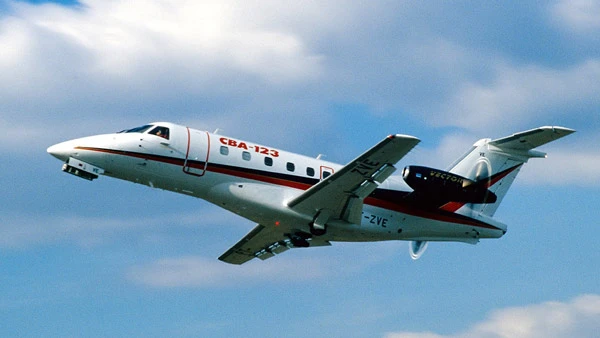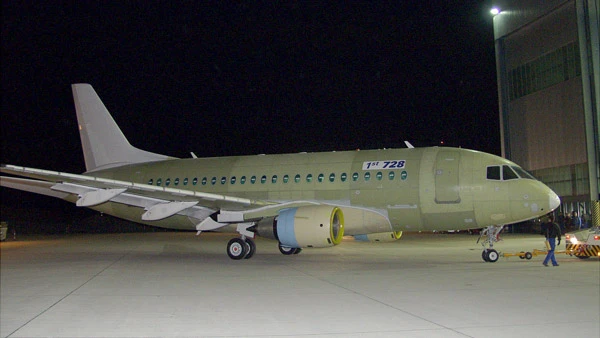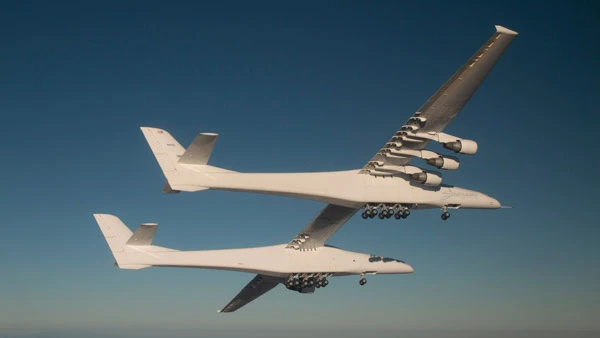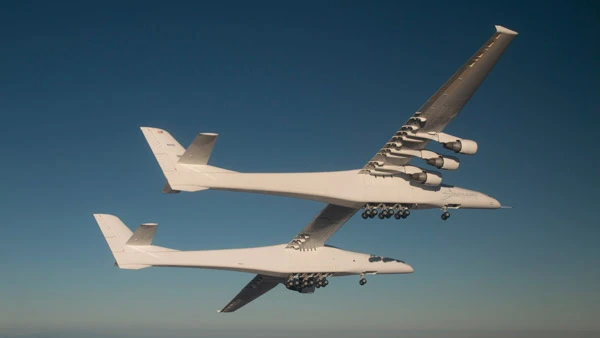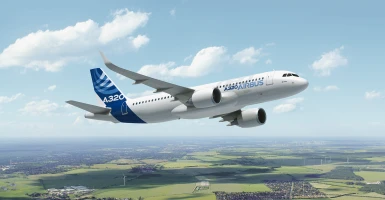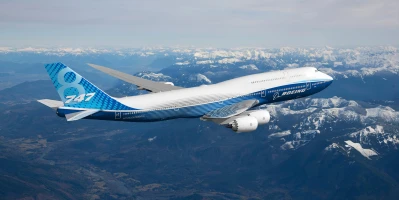good-to-know
One of a kind: These aircraft remain flying rarities
Some aircraft concepts get no further than the prototype stage and so never make it into production. What remains are artifacts of engineering magic that often end up in museums.
author: Andreas Spaeth | 8 mins reading time published on: 12.04.2023
author:
Andreas Spaeth
has been traveling the world as a freelance aviation journalist for over 25 years, visiting and writing about airlines and airports. He is frequently invited to appear on radio and TV programs to discuss current events in the sector.

Aircraft engineers and manufacturers are rarely short of ideas. But not all of these brainwaves make it from the physical or digital drawing board into the air. And even when they do get as far as the prototype stage, it’s not unusual for that to be the last chapter in their history. These “one-day flyers” offer fascinating insights into how aviation technology might have evolved. Looking back, some seem obsolete while others may be mourned decades later. AEROREPORT offers a brief guide to ten aircraft concepts that, while now being mere footnotes in aviation history, definitely provided key innovations to future successful designs.
Avro Canada C102 Jetliner
With its maiden flight, this Canadian aircraft became the world’s second commercial jet airliner, just 25 months after design work began. It made it to the air just 13 days behind the British-made de Havilland Comet. A 50-seater four-engine turbojet, the C102 was designed mainly for busy routes along the U.S. eastern seaboard and was quite the sensation at the time. In April 1950, it was the first jet to carry airmail. If it had entered into service in 1952 as planned, Canada would have had a head start of six years on the Boeing 707 and eleven on the Boeing 727.
| Origin: | Canada |
| Number built: | 1 |
| Maiden flight: | August 10, 1949 |
| Type: | Short-haul passenger jet |
| Reason for failure: | The project was canceled in 1951 to allow Avro Canada to channel all its resources into completing the delayed Canuck interceptor fighter. |
| Exhibited at: | The fuselage nose and cockpit are on show at the Canada Aviation and Space Museum in Ottawa. |
Bristol Brabazon
The Bristol Brabazon was meant to mark the United Kingdom’s return to commercial aircraft manufacture following the Second World War. At the end of the 1940s, it was one of the largest aircraft ever built—comparable with the Airbus A300 or the Boeing 767, but with a fuselage diameter 1.5 meters larger than that of the Boeing 747 and featuring twin decks from front to back. Despite this scale, its purpose was to provide the last word in luxury to just 100 passengers at a time. The Brabazon was powered by eight radial engines with counter-rotating propellors.
| Origin: | United Kingdom |
| Number built: | 1 |
| Maiden flight: | September 4, 1949 |
| Type: | Long-haul passenger aircraft |
| Reason for failure: | The aircraft’s concept did not at all match the needs of the postwar market and failed to attract any buyers. By the time the project was scrapped in 1953, it had cost 6 million pounds or more than 150 million euros in today’s money. |
| Exhibited at: | A few surviving parts are on display at the M Shed museum in Bristol and at the National Museum of Flight in Scotland. |
Baade 152
After the GDR was established, East German aviation engineers working in the Soviet Union were allowed to return home. Germany’s first postwar commercial project was carried out at the recently founded VEB Flugzeugwerke Dresden aircraft plant. The author of the concept was Brundolf Baade, after whom the aircraft is named. East Germany’s Deutsche Lufthansa was lined up as customer for a short-haul jet that would carry between 57 and 72 passengers. In 1959, the prototype crashed during only its second test flight. A second, improved prototype—now powered by four GDR-made Pirna jet engines—took off in 1960. At that time, more than 20 of these aircraft were in production.
| Origin: | German Democratic Republic |
| Number built: | 3 |
| Maiden flight: | December 4, 1958 |
| Type: | Short-haul passenger jet |
| Reason for failure: | In 1961, the GDR government ordered domestic production of commercial aircraft to cease after the Soviet Union withdrew its support and potential orders to focus on its own development programs. |
| Exhibited at: | A reconstructed fuselage is on show in the terminal building at Dresden Airport. Sections can be found in Dresden Transport Museum and in an exhibition in Gellmersdorf near Berlin. |
Dornier Do 31
In the 1960s, in response to the threat posed by the Cold War, the German Armed Forces prioritized the development of a vertical takeoff transport aircraft that would be able to take off from remote areas during a state of defense without the need for an airport runway. Equipped with eight lift engines and two pivoting cruise engines, the Do 31 took off like a helicopter and behaved like a winged aircraft when cruising. It was the first jet-powered vertical takeoff transport aircraft ever built. A passenger variant, the Do 231, was also planned.
| Origin: | Federal Republic of Germany |
| Number built: | 3 |
| Maiden flight: | February 10, 1967 |
| Type: | Vertical takeoff transport aircraft |
| Reason for failure: | Following a change to NATO defense strategy, the project was deemed obsolete for the military and was scrapped in 1970. In the wake of the 1973 oil crisis, the aircraft’s extremely high fuel consumption ruled out a commercial application, as did its massive noise footprint. |
| Exhibited at: | Both preproduction prototypes survive: one is at Flugwerft Schleißheim near Munich, the other at the Dornier Museum Friedrichshafen. |
VFW 614
The VFW 614 was the first passenger jet to be developed in West Germany. Particularly robust, it was meant to replace the legendary DC-3 in international markets. Designed to carry up to 42 passengers, this twin-engine low-wing aircraft had a very special feature: its engines were mounted on pylons above the wings rather than below as is generally the case. This was intended to allow the aircraft to use unpaved runways without sucking debris into its engines. By 1975, the VFW 614 had even made it into regular service with three airlines; a total of 16 production aircraft were made. A lack of sales brought production to a close in 1977, and by 1980 all airlines had returned their models to the manufacturer.
| Origin: | Federal Republic of Germany |
| Number built: | 19 |
| Maiden flight: | July 14, 1971 |
| Type: | Short-haul passenger jet |
| Reason for failure: | It took another two decades for the regional jet concept to catch on. In this way, the VFW 614 was too far ahead of its time for commercial success. |
| Exhibited at: | Many of these aircraft still exist, including at the Technik Museum Speyer, the Airbus plant in Hamburg-Finkenwerder, and Flugwerft Schleißheim near Munich. |
Antonov An-225 Mriya
At the end of the 1980s, the Soviet Union was in need of a transport aircraft for its Buran orbiters, which were similar to the U.S. space shuttle. Within a very short time frame, the Soviets developed the largest and heaviest transport aircraft the world had ever seen: the six-engine Antonov An-225 Mriya (dream). Following the collapse of the Soviet Union, the now independent country of Ukraine reactivated this giant transporter at the dawn of the new millennium. Since then, it has been used to transport large and heavy goods that otherwise would never have been flown. The record load weighed over 250 metric tons, twice as heavy as can be carried inside a Boeing 747 freighter. Due to its dimensions, the An-225 holds 240 world records, which is unparalleled in aviation history. At 84 meters in length, it remains the world’s longest aircraft.
| Origin: | Soviet Union |
| Number built: | 1 |
| Maiden flight: | December 21, 1988 |
| Type: | Heavy-lift transport aircraft |
| Reason for failure: | In February 2022, while still in service, the only surviving An-225 was destroyed in its hangar near Kyiv as a result of the war in Ukraine. |
| Exhibited at: | None exhibited |
Embraer CBA 123 Vector
Equipped with advanced technology, the Vector was the product of a partnership and predicted shared market between Brazil and Argentina at the end of the 1980s. Its design set standards with pusher propellers as well as innovative avionics and aerodynamics. By the time of its maiden flight in 1990, 130 orders had been received and the Vector had been shown at both the Paris and Farnborough air shows.
| Origin: | Brazil |
| Number built: | 2 |
| Maiden flight: | July 18, 1990 |
| Type: | Regional turboprop aircraft |
| Reason for failure: | Ironically, the root of the Vector’s undoing was the sophistication of its technology, which meant it had a higher than usual sticker price. A political crisis in Brazil and Embraer’s financial difficulties did the rest. The project was abandoned in 1991, but the development work paved the way for a later success: Embraer’s 145 jets. |
| Exhibited at: | Both prototypes can be seen in Brazil, one at the Embraer plant in São José dos Campos, the other at the Museu Aeroespacial in Rio de Janeiro. |
Fairchild Dornier 728
In 1996, U.S. aviation company Fairchild took over long-standing German aircraft manufacturer Dornier after the latter suffered financial difficulties. The new company, Fairchild Dornier, announced plans for a family of regional jets ranging from the 44-seater 328 to the 110-seater 1128. The first of the new variants was the 728 for 70 to 85 passengers. By offering a modern design and a cabin wider than that of any aircraft in its class, the 728 secured 125 firm orders by the time it was rolled out in March 2002. Lufthansa was the launch customer with 60 firm orders.
| Origin: | Germany |
| Number built: | 3 |
| Maiden flight: | None; rolled out March 21, 2002 |
| Type: | Regional jet |
| Reason for failure: | Fairchild Dornier, further weakened after the attacks on September 11, filed for bankruptcy in April 2002. Its major customers, Lufthansa and a leasing company, canceled their orders, which made a takeover impossible. This aircraft never flew. |
| Exhibited at: | Sections of the prototype are on show at the Technik Museum Speyer. |
Mitsubishi SpaceJet
For the first time since introducing the YS-11 regional turboprop aircraft, Japan wanted to bring its own passenger aircraft to market: the Mitsubishi SpaceJet (originally named the Mitsubishi Regional Jet). Two different sizes were envisaged, one with 76 seats, the other with 96. The fuselage was made of the customary aluminum, while power was provided by PW1200G engines from Pratt & Whitney’s GTF™ family. ANA placed an order for 15 of these aircraft back in 2008 and U.S.-based SkyWest followed suit with its order for 200 in 2012. After the maiden flight in 2015, the test program kept getting pushed back by a few years.
| Origin: | Japan |
| Number built: | 8 |
| Maiden flight: | November 11, 2015 |
| Type: | Regional jet |
| Reason for failure: | By 2022, the SpaceJet was still not suitable for everyday use and the pandemic caused yet more delays. Key orders had been withdrawn and the industry’s strict scope clause and pilot shortage meant that the U.S. was no longer a reliable sales market. In addition, Embraer had dominated this segment for years. The project was canceled in February 2023. |
| Exhibited at: | None exhibited |
Scaled Composites Model 351 Stratolaunch, or “Roc”
In 2010, legendary aircraft designer Burt Rutan began working with Microsoft cofounder Paul Allen (who died in 2018) to build a special aircraft for Allen’s company Stratolaunch. This aircraft is designed as a flying launch vehicle for spacecraft. Featuring a twin-fuselage design, Roc is the largest aircraft made of composite materials and has the longest wingspan of any aircraft ever made: over 117 meters. To save money, 113 metric tons of the total takeoff weight of 590 metric tons came from two decommissioned Boeing 747-400 aircraft, including the six PW4056 turbofan engines, the cockpit and the landing gear.
| Origin: | United States |
| Number built: | 1 |
| Maiden flight: | April 13, 2019 |
| Type: | Launch vehicle for spacecraft |
| Reason for failure: | This project is still in its test phase. As of October 2022, eight flights had been completed. |
| Exhibited at: | None exhibited (active program) |



